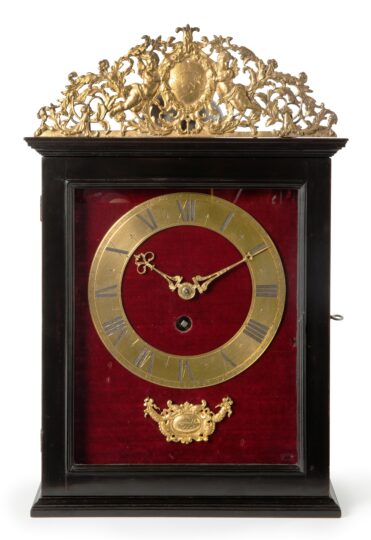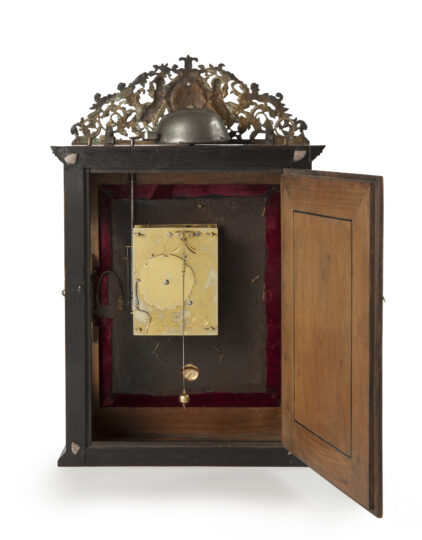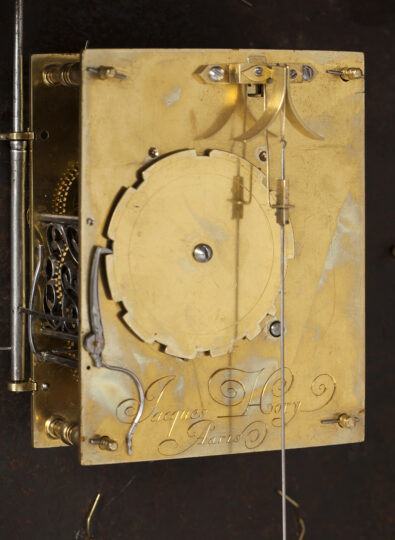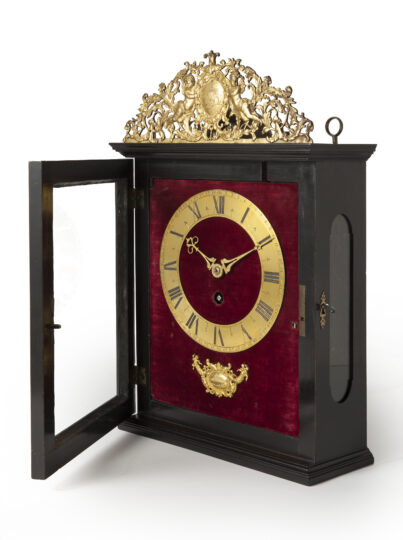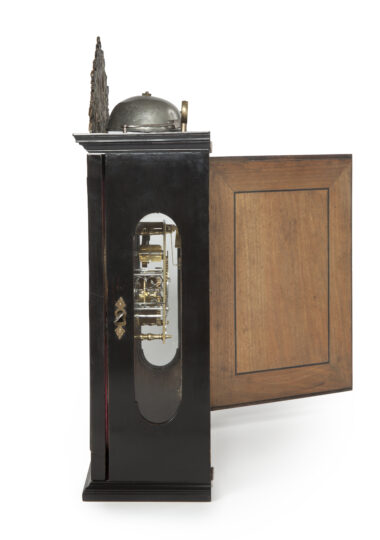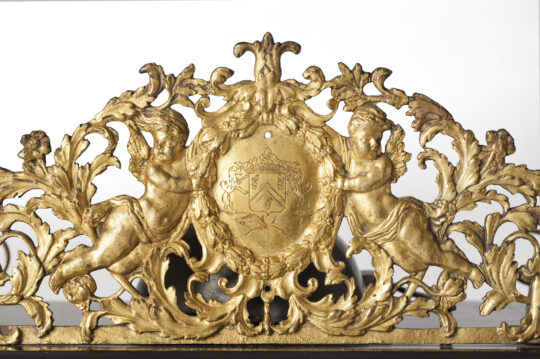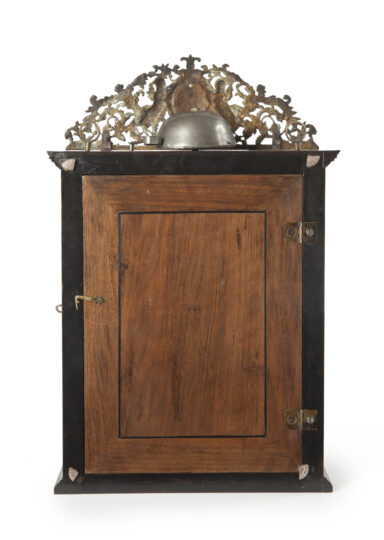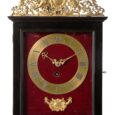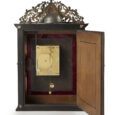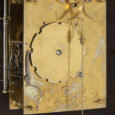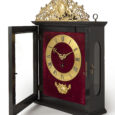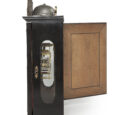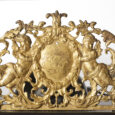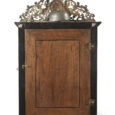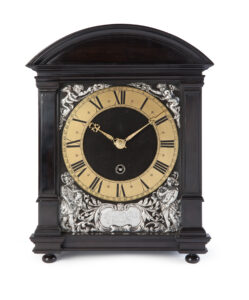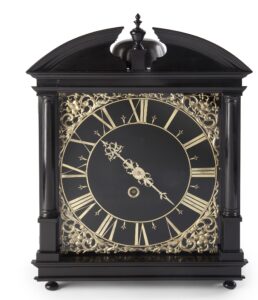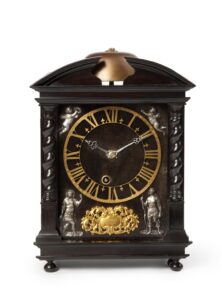RELIGIEUSE Jacques Hory AParis Ca. 1660 France
M&R49
RELIGIEUSE
Signed: Jacques Hory AParis
Circa 1660-65
France
Movement
The spring-driven three-day movement of this religieuse has going and striking trains, driven by a single spring barrel. The going train has verge escapement with short pendulum between cycloid cheeks, whilst the striking train is regulated by a numbered count wheel and indicates the hours fully on a bell on top of the case and the half hours by one stroke. The backplate is signed Jacques Hory AParis
Dial
The iron dial which is covered with red velvet has a gilt-brass chapter ring with Roman numerals, half-hour, quarter-hour and Arabic minute divisions. Below is a gilt cast-brass signature cartouche: Jacques Hory AParis. This cartouche can be lifted up to reveal a hole through which the pendulum can be set going whilst the clock is on the wall. The time is indicated by a fine pair of pierced and engraved gilt brass hands.
Case
The ebonised pearwood-veneered walnut case of this religieuse has an elaborately pierced gilt cast brass pediment behind which the bell is situated. In this pediment two cherubs hold a coat of arms between them. There are glazed windows to the sides through which the movement is visible, whilst at the back there is a door giving access to the movement. The case has mouldings all around
Duration 2 days
Height 42 cm
Width 25,5 cm
Depth 10 cm
Literature
-Tardy, Dictionnaire des Horlogers Français, Paris, 191, p. 299.
-R. Plomp, Early French Pendulum Clocks, 1658-1700, Schiedam, 2009, p. 1, 20 and 43
-H.M. Vehmeyer, Clocks – Their Origin and Development 1320 – 1880, Gent, 2004, pp. 744-46, 796 and 972
The maker
Jacques Hory (also known as Ory, Ourri, or Orri) is on record in 1650 and 1658. He became maître Faubourg St-Jacques, St Marcel, in 1650 and was clockmaker to the court of Louis XIV from 1673 until 1690. He is one of the early makers of pendules religieuses.

